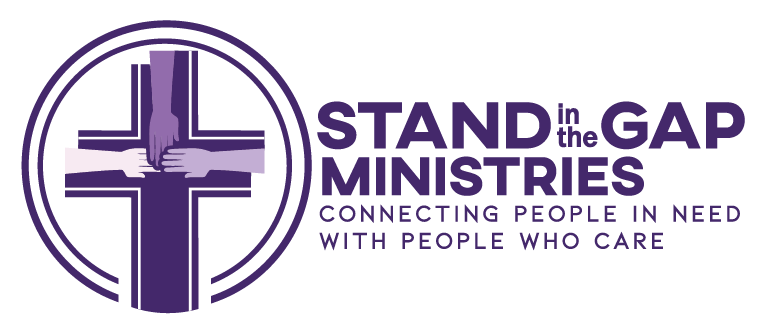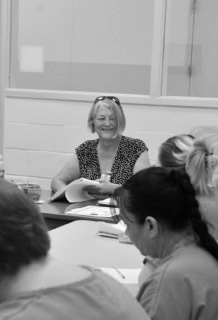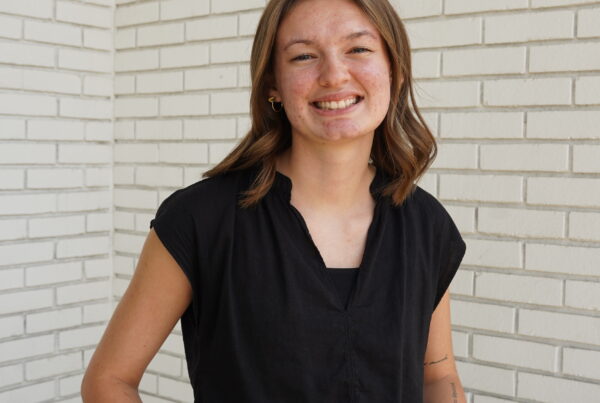Stand in the Gap’s Rhonda Bear just wrapped up one year of service on Governor Stitt’s RESTORE task force. The team was made up of 15 people and tasked with suggesting changes to reform and improve Oklahoma’s criminal justice system. We caught Rhonda on the phone to ask about her experience and the resulting report.
#1 Did you learn anything you didn’t know already?
One of the things that was so great about this group is that it was key players coming together for a common goal answer. There was Pardon and Parole, the Attorney General’s office, district attorneys and judges, the Department of Human Services and Mental Health… all these different perspectives on the problem of criminal justice in Oklahoma. I know what I do and the women I serve so well. It was interesting to hear from people that are part of this population in different ways.
One of the things we talked about was the “pipeline to prison”. We know that a child experiencing trauma at an early age is the beginning stage of incarceration. Everyone in the group recognized the importance of shifting the focus from punishment after crimes happen, to preventing the crimes in the first place by intervening when trauma happens in childhood.
Another thing I learned was about this Bible college in Louisiana. Louisiana had one of the most violent prison populations in the US. In one prison, there were about 365 killings a year – one a day. Now they have like one a year. What happened? They changed the culture.
They opened a seminary at that violent prison where most of the men were doing life without parole and the men found purpose beyond the razor wire.
Finding a purpose helped them find hope and finding hope gave them something to live for.
That idea isn’t new to me, even though the seminary strategy was. I think that’s one thing we [Rhonda and her fellow Women in Transition instructors] bring to prison with us; hope and purpose. The women in our classes can look at us and believe that just because they are here, this isn’t their final destination.
#2 Was there a particularly memorable story that you heard from someone the task force interviewed?
It was so important for this group to hear the voices of victims and to validate them. We heard some really powerful stories and I have to be careful because of confidentiality. But there was one story that really sticks with me…
We met a child who was quadriplegic because she’d been riding in a car with her mother when a man on meth crossed the centerline and hit them head on. Now he’s out of prison and his life goes on, but this young girl is still bound to a chair. She can’t be all she was before the wreck.
I think it’s important for people to know that criminal justice reform isn’t saying it’s okay to hurt people and to do harm. There has to be punishment and accountability.
The issue is, this man got a 10-year sentence, but a woman who failed drug court got 45 years. Criminal justice reform has to do with treating mental health issues and the inconsistency of sentencing across the state. In the rural communities, crimes are treated a whole lot different. And we have to do better.
#3 Before we look at six specific recommendations of the RESTORE report, what would you say people should know about what your report suggested to the Governor?
That there was a year’s worth of work put into that report. Oklahoma did not get where we are overnight and it’s going to take a while to make the lasting changes necessary. I feel like this report is just the tip of the iceberg and there’s more to come. The Governor has asked us to stay on and commit to another year on the RESTORE task force.
#4 We’ve picked six recommendations from your RESTORE task force report. From your perspective, will you give us the 10,000-foot-view of each of these? What do they mean and what would the impact be?
1)-Creation of a Chief Cultural Officer within the Department of Corrections
This is one of two recommendations we made to change the culture in our prisons. This would be a full time position to focus on re-entry, education, and mental health treatment initiatives and programs.
2)-Creation of an accredited seminary or Bible college program in our corrections system
The main thing to know here is that we’ve seen this have an impact in Louisiana as I mentioned earlier, and that funding would be raised through private donors.
3)-ACEs Trauma and Family Dynamics
ACE means “adverse childhood experience” and incarceration of a parent is a great example of that. Our report recommended that children in foster care and juvenile justice systems receive trauma-informed care to stop the cycle before the child becomes an incarcerated adult.
Stand in the Gap partners with OU Tulsa’s Hope Research Center for our Hope Surveys and the RESTORE task force heard from the Director of that center, Dr. Hellman. He says that we need to create pathways for children to find hope. What a gift that would be to the next generation!
4)-Re-Entry
So this is obviously one of my passions. You can’t start planning for re-entry to society on the day you get out. We recommended that planning for a prisoner’s release begin no later than the day she ARRIVES in prison. That includes planning for employment and housing and connection to other resources through transition fairs. At the minimum, everyone should leave prison with an ID, job possibilities, and a safe place to live. Today, that is definitely not happening.
5)-Sentencing and Bail Reform
Sentencing reform especially is such a complicated issue that can have so many unintended consequences. There must be certainty and predictability for sentencing and that isn’t the case now. How to get there and cause the least amount of problems in the process is probably the biggest issue facing our state. It’s critical work.
6)-Alternatives to Monetary Bail
We suggested the alternatives to monetary bail be researched and evaluated. We heard some terrible stories about people staying in jail for more than a year, or just deciding to plead guilty so they could get out of jail when they couldn’t post bail. There’s obviously a lot of problems with that. Some states are using alternatives like real-time tracking technology when accused people lack the funds to pay bail.
#5 There’s certainly more to your report but we know you need to get back to work. Before you go, describe your experience on the task force. What are you taking away from the experience?
I feel like people came together from different worlds that are very passionate about seeing change take place in the criminal justice system and every person gave their best. Now we have an outcome and we will see what the legislature does and how the state implements it.



